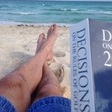IGNORED
Some Rule Myths, Misconceptions, and other stuff.
Note: This thread is 4437 days old. We appreciate that you found this thread instead of starting a new one, but if you plan to post here please make sure it's still relevant. If not, please start a new topic. Thank you!
-
Topics Being Discussed Right Now on The Sand Trap
-
- 12 replies
- 364 views
-
- 6,771 replies
- 270,358 views
-
- 3,496 replies
- 350,351 views
-
- 162 replies
- 20,162 views
-
2024 TST Outing - June 1/2 @ EagleSticks and Virtues 1 2 3 4 11
By StuM, in Member Outings & Meetups
- 180 replies
- 15,108 views
-










Recommended Posts
Create an account or sign in to comment
You need to be a member in order to leave a comment
Create an account
Sign up for a new account in our community. It's easy!
Register a new accountSign in
Already have an account? Sign in here.
Sign In Now